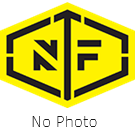| Tools | |
|---|---|
| Model | |
| Room | 3D Printing Room |
| Work envelope/max capacity | |
| Link to manual | |
| Related tools | |
| Trainer(s) | Richard Venzon |
| Training Sessions | no training sessions include this tool |
| Knowledge keeper(s) | Matt Olson |
| Training document(s) | |
| Material Safety Data Sheet (MSDS) | |
| Safe Work Procedure | |
| Consumables | |
| Software | this machine has no software listed |
| Equipment type | tool |
| 3D Printing Room Precautions apply |
|
You will be working in the 3D Printing Room . In order to keep safe from hazards created by you or other workers using any of the tools in this room, the following precautions apply in addition to any other precautions:
|
The Fortus 400MC is used for certain engineering applications (high precision printing, certain unusual materials). North Forge supplies the material and members pay for what is used.
Currently, only two of the four material bays are functional. One is used for printing material, the other is used for support material.
Note that changing materials is a long and involved process - you must change the tips, wait several hours for the system to stabilize at the correct temperature, then perform a calibration procedure.
Build plates are considered a consumable and cannot be reused. To extend the life of the build plate, keep parts towards the edges and corners of the build plate. To avoid head collisions during wiping, start nesting parts at the top-left of the build plate then continue down and to the right.
Be careful when printing odd materials - some materials (like ULTEM) require a special build plate to ensure proper adhesion.
